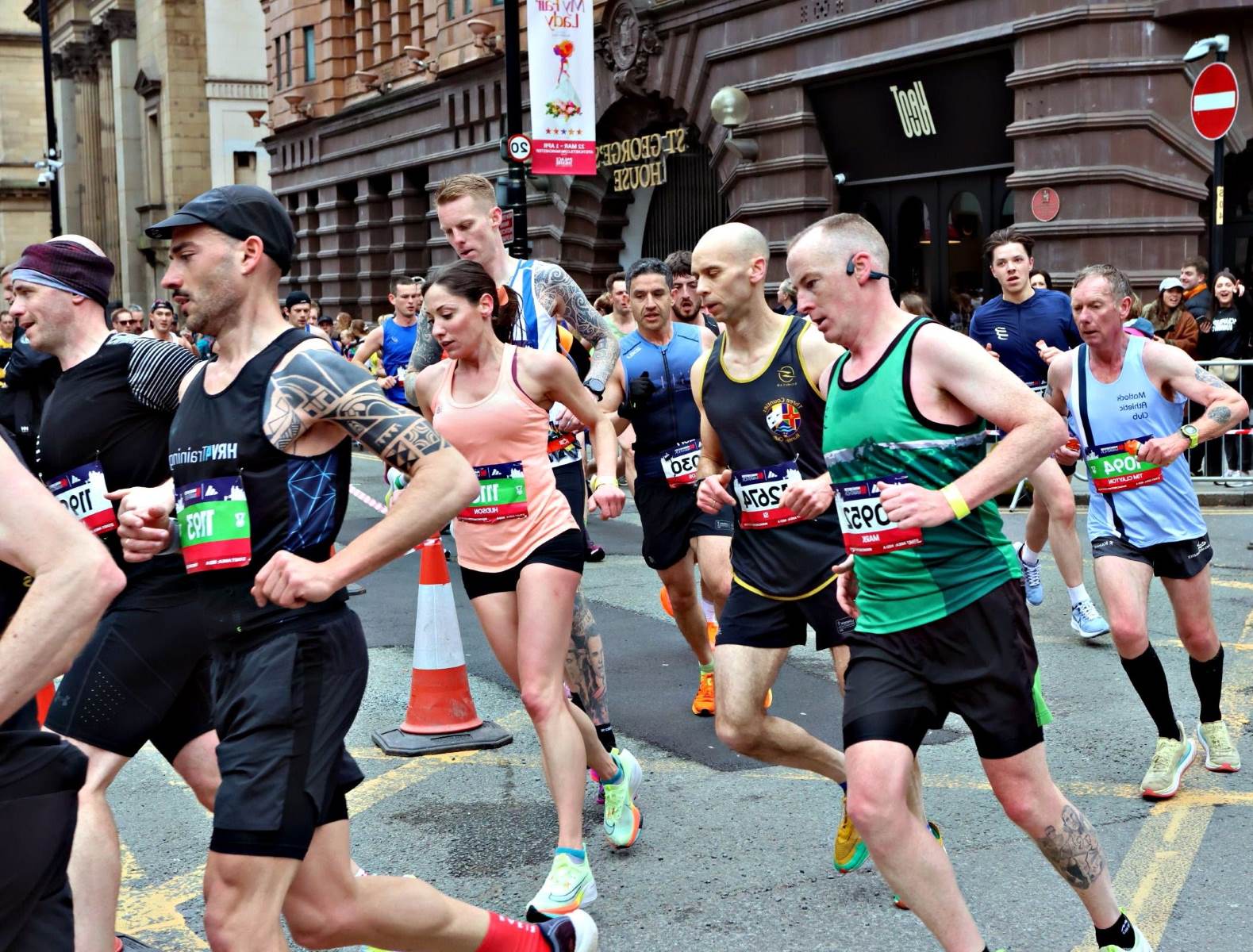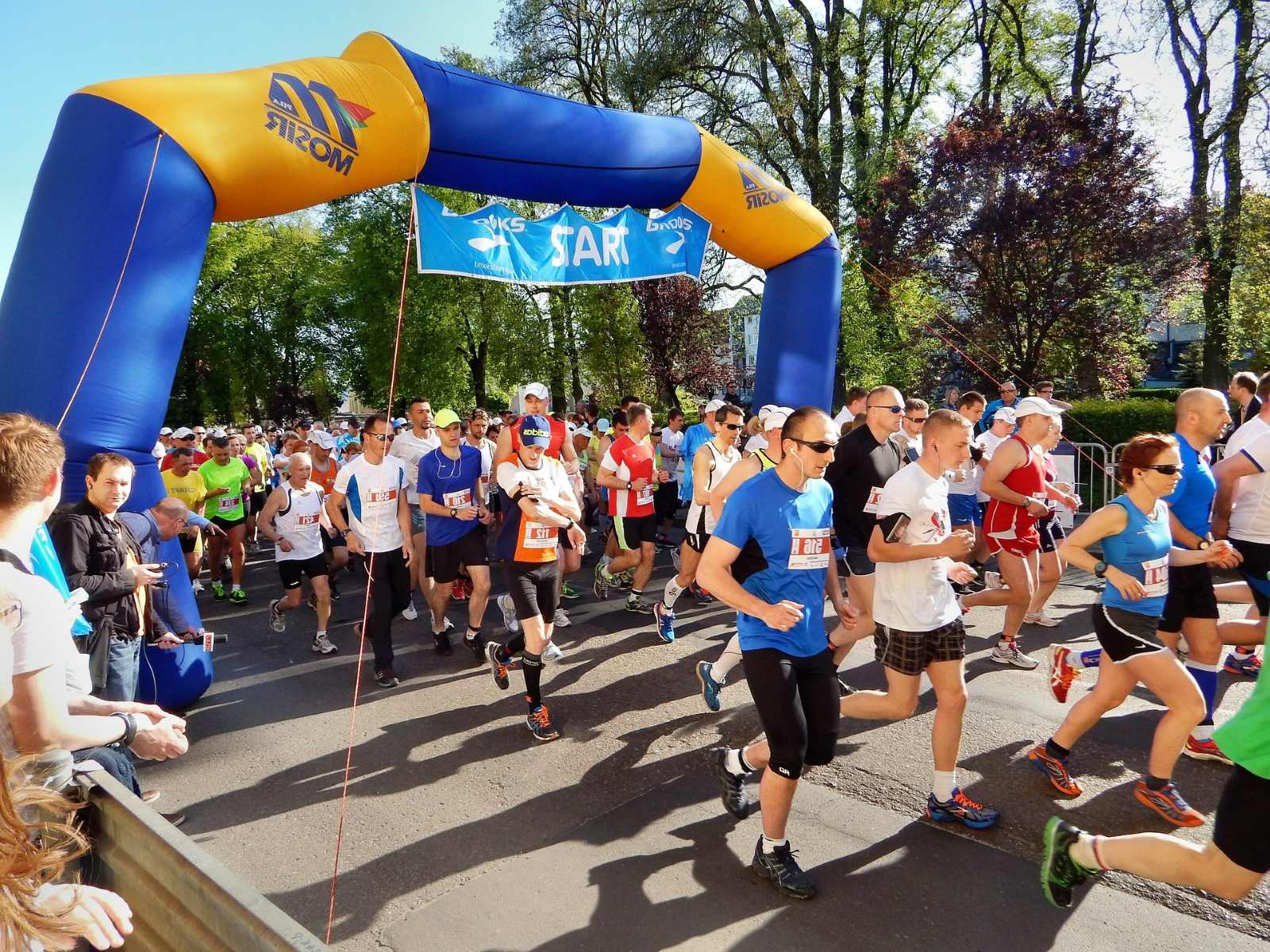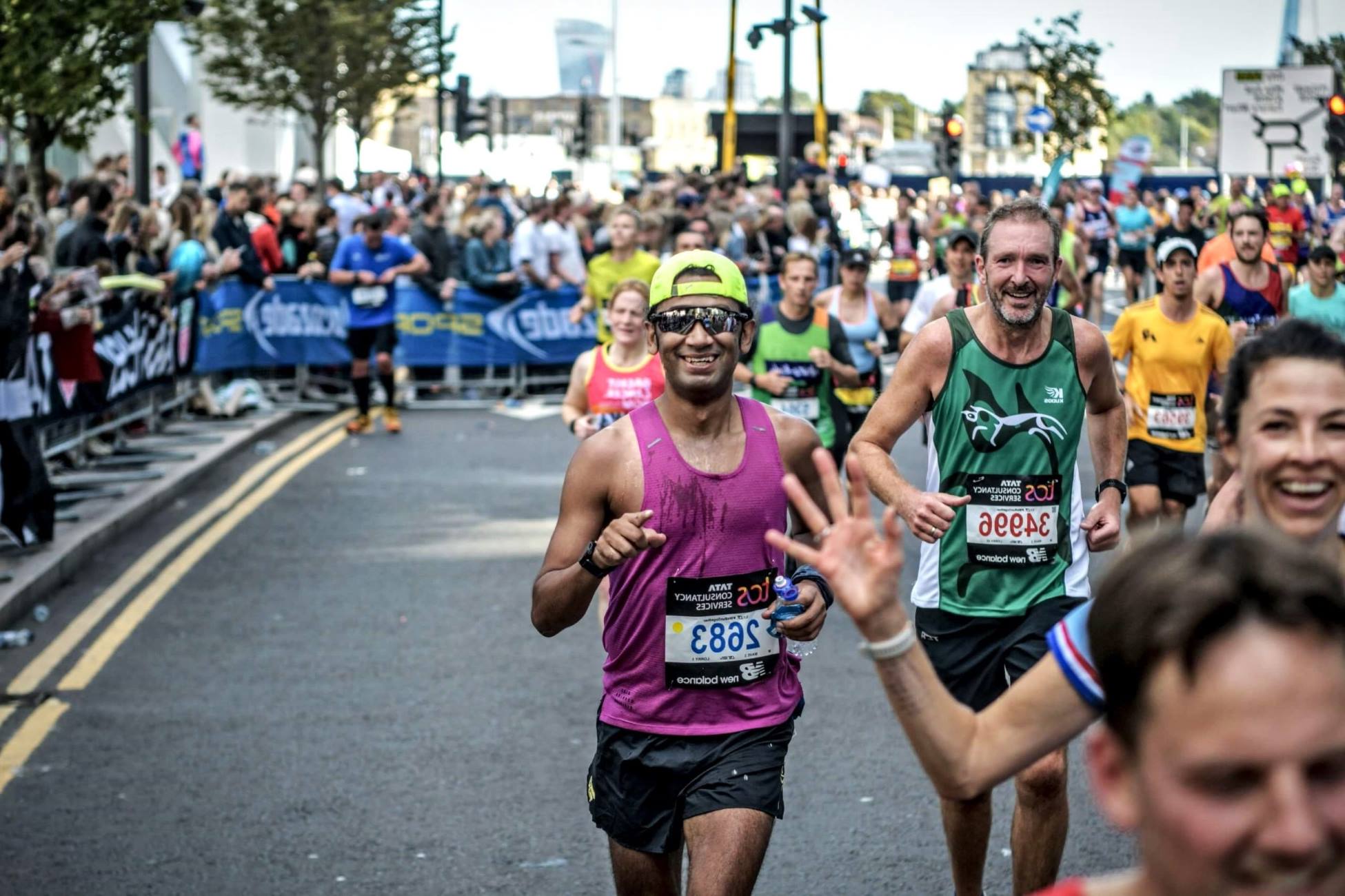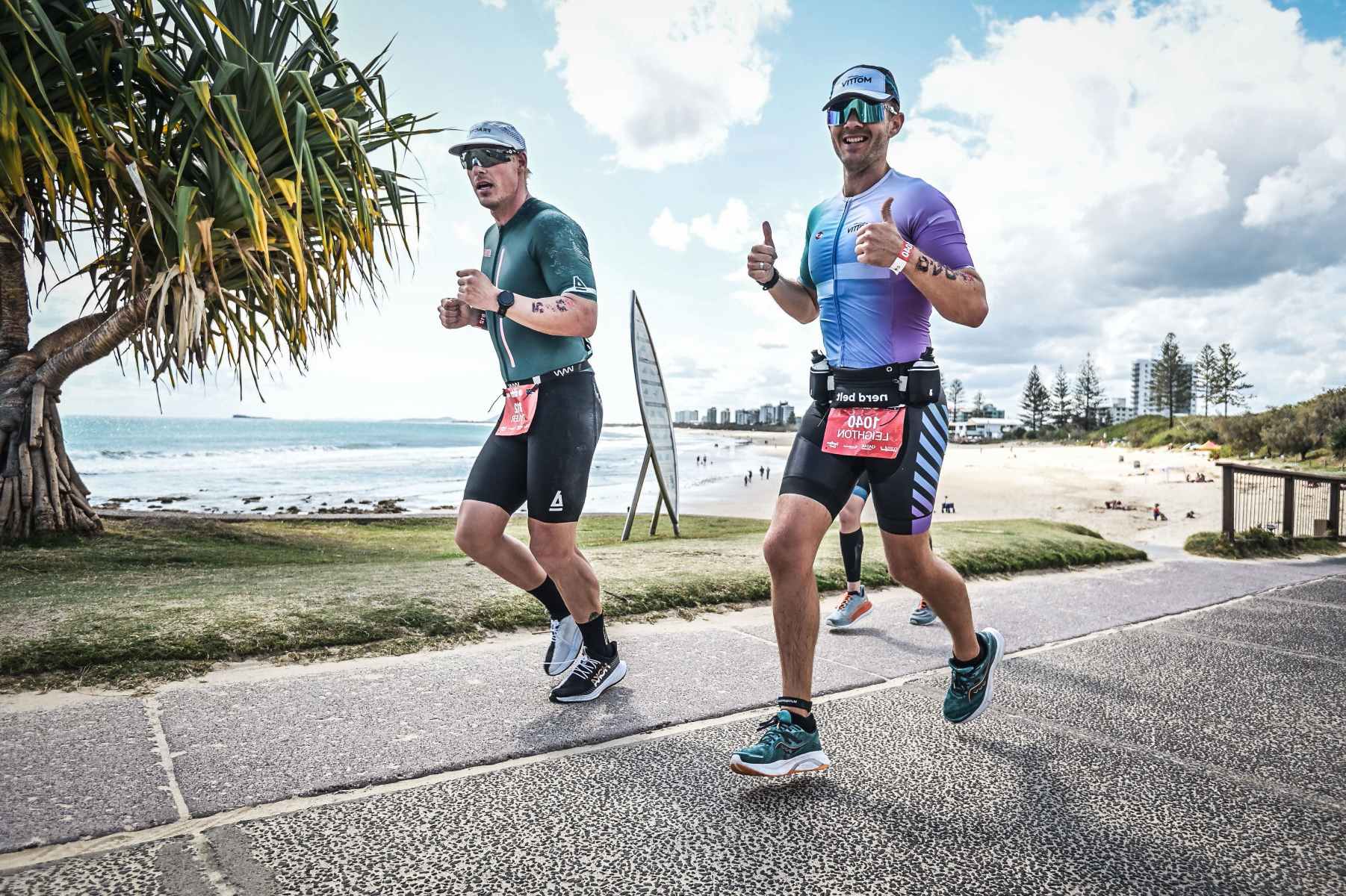Home>Training & Techniques>Training Plans>Achieving A Sub-3:30 Hour Marathon: Training Plan


Training Plans
Achieving A Sub-3:30 Hour Marathon: Training Plan
Published: March 3, 2024
Discover effective training plans to help you achieve a sub-3:30 hour marathon. Get expert guidance and tips for successful marathon training.
(Many of the links in this article redirect to a specific reviewed product. Your purchase of these products through affiliate links helps to generate commission for Therunningadvisor.com, at no extra cost. Learn more)
Table of Contents
Introduction
Embarking on the journey to achieve a sub-3:30 hour marathon is a formidable yet exhilarating endeavor. It requires dedication, perseverance, and a well-structured training plan. Whether you're a seasoned marathoner aiming to break through this time barrier or a determined newcomer with a passion for long-distance running, the pursuit of this goal is a test of physical and mental fortitude.
In this comprehensive guide, we will delve into the essential components of a training plan designed to propel you towards this ambitious milestone. From establishing realistic goals to fine-tuning your nutrition and mental preparation, every facet of your training regimen will be meticulously addressed. By the end of this journey, you will be equipped with the knowledge and strategies to conquer the 26.2-mile distance in under 3 hours and 30 minutes.
The path to a sub-3:30 hour marathon is not merely about logging miles and pushing your limits; it's a holistic pursuit that encompasses physical conditioning, mental resilience, and strategic planning. As we navigate through the intricacies of this training plan, you will gain insights into the art of balancing speed work, tempo runs, and long-distance mileage. Moreover, we will explore the significance of rest and recovery, as well as the pivotal role of nutrition and hydration in optimizing your performance.
This guide is not just a compilation of training techniques and race strategies; it's a roadmap that will empower you to embrace the challenges, setbacks, and triumphs that accompany the pursuit of a sub-3:30 hour marathon. As we embark on this transformative journey together, remember that every step you take and every milestone you reach is a testament to your unwavering commitment and unyielding spirit.
So, lace up your running shoes, brace yourself for the exhilarating road ahead, and let's embark on this extraordinary quest to conquer the marathon distance in under 3 hours and 30 minutes.
Setting Realistic Goals
Setting realistic goals is the cornerstone of any successful marathon training plan. When aiming for a sub-3:30 hour marathon, it's crucial to establish objectives that are both ambitious and attainable. This involves a comprehensive assessment of your current fitness level, past race performances, and the incremental progress you aim to achieve. By setting clear and measurable goals, you can chart a course that aligns with your capabilities while igniting the drive to push beyond your limits.
To begin, it's essential to analyze your previous marathon times and assess your current level of fitness. This introspective evaluation provides valuable insights into your strengths and areas that require improvement. By acknowledging your starting point, you can set realistic benchmarks for improvement and track your progress effectively.
When setting goals for a sub-3:30 hour marathon, it's beneficial to break down the target time into manageable segments. For instance, focusing on achieving consistent splits for each mile or kilometer can serve as interim milestones during your training. This approach not only facilitates a gradual progression but also instills a sense of accomplishment as you conquer each segment of the race distance.
Moreover, consider the terrain and course profile of the marathon you intend to conquer. Understanding the topography and potential challenges of the race course enables you to tailor your training plan to simulate similar conditions. By factoring in elevation changes, weather patterns, and other variables, you can set performance goals that are tailored to the specific demands of the race.
It's important to remember that setting realistic goals doesn't equate to complacency. On the contrary, it's about striking a balance between ambition and feasibility. Embrace the spirit of continuous improvement and be open to adjusting your goals as you progress through your training. This adaptive approach allows you to recalibrate your targets based on your evolving fitness level and the insights gained from your training sessions.
In essence, setting realistic goals for a sub-3:30 hour marathon involves a blend of self-awareness, strategic planning, and a commitment to relentless improvement. By anchoring your aspirations in a foundation of achievable objectives, you pave the way for a purposeful and fulfilling training journey that culminates in a triumphant marathon performance.
Understanding the Importance of Base Mileage
Base mileage forms the bedrock of any marathon training plan, serving as the fundamental building block upon which endurance, strength, and aerobic capacity are developed. This phase of training focuses on gradually increasing the volume of weekly mileage to fortify the body's physiological adaptations, laying a robust foundation for the more intense phases of marathon preparation.
During the base mileage phase, the emphasis is not solely on speed or race-specific workouts, but rather on cultivating the resilience and stamina necessary to withstand the rigors of marathon training. By incrementally ramping up the weekly mileage, runners acclimatize their bodies to prolonged periods of exertion, thereby enhancing their cardiovascular efficiency and muscular endurance.
The significance of base mileage extends beyond physical conditioning; it also fosters mental fortitude and discipline. As runners accumulate miles during this phase, they cultivate the mental resilience required to tackle the arduous demands of marathon training. Moreover, the consistency and dedication exhibited during the base mileage phase lay the groundwork for a disciplined approach to the subsequent stages of training.
A gradual and structured increase in mileage during this phase mitigates the risk of overuse injuries, allowing the body to adapt progressively to the escalating training load. This prudent approach minimizes the likelihood of burnout and sets the stage for a sustainable and injury-free training progression.
Furthermore, base mileage serves as a platform for refining running mechanics and form. As runners accumulate miles at a comfortable pace, they have the opportunity to focus on their stride, posture, and foot strike, thereby honing their running technique and minimizing the risk of injury.
In essence, the base mileage phase is not merely a precursor to more intense training; it is a pivotal stage that lays the groundwork for a successful marathon performance. By embracing the gradual accumulation of mileage, runners fortify their physical and mental resilience, cultivate sound running mechanics, and set the stage for a purposeful and sustainable training journey.
Incorporating Speed Work and Tempo Runs
In the pursuit of a sub-3:30 hour marathon, the integration of speed work and tempo runs assumes paramount significance in enhancing race-specific fitness and performance. These targeted workouts are instrumental in elevating aerobic capacity, lactate threshold, and running economy, thereby equipping runners with the requisite speed and endurance to conquer the marathon distance within the stipulated time frame.
Speed Work:
Speed work encompasses a spectrum of structured workouts designed to enhance running speed, power, and neuromuscular coordination. These sessions typically involve intervals of high-intensity running interspersed with periods of active recovery. By subjecting the body to brief yet intense bursts of effort, speed work stimulates physiological adaptations that culminate in improved running efficiency and velocity.
One of the most prevalent forms of speed work is interval training, which involves alternating between periods of maximal exertion and recovery. For instance, a typical interval session may comprise repetitions of 400-meter sprints at near-maximal effort, followed by brief recovery intervals. This cyclical pattern of exertion and recovery serves to elevate anaerobic capacity, bolster cardiovascular fitness, and engender neuromuscular adaptations that enhance running speed and power.
Tempo Runs:
Tempo runs, also known as threshold runs, are structured workouts aimed at elevating the lactate threshold—the intensity at which the body begins to accumulate lactic acid at a faster rate than it can be metabolized. By conducting sustained efforts at or near the lactate threshold pace, runners stimulate physiological adaptations that augment their ability to sustain higher speeds for prolonged durations.
A typical tempo run involves maintaining a challenging yet sustainable pace for an extended period, typically ranging from 20 to 40 minutes. This sustained effort at a brisk tempo serves to enhance aerobic capacity, fortify mental resilience, and cultivate the ability to sustain race pace over extended distances. Moreover, tempo runs facilitate the development of pacing acumen, enabling runners to gauge their exertion levels and optimize their performance during the marathon.
Incorporating speed work and tempo runs into the training plan demands a judicious balance between intensity and recovery. These workouts should be integrated strategically, allowing for adequate rest and adaptation between sessions to optimize their efficacy. By infusing the training regimen with these targeted workouts, runners can elevate their race-specific fitness, fortify their mental resolve, and hone the speed and endurance required to achieve a sub-3:30 hour marathon.
The integration of speed work and tempo runs into the training plan is not merely about elevating physical capabilities; it is a testament to the meticulous preparation and unwavering commitment that underpin the pursuit of a sub-3:30 hour marathon. As runners embrace the rigors of these targeted workouts, they fortify their bodies and minds, inching closer to the realization of their marathon aspirations.
Balancing Rest and Recovery
Balancing rest and recovery is a critical yet often overlooked aspect of marathon training, especially when striving for a sub-3:30 hour marathon. While the allure of relentless training may seem compelling, it's imperative to recognize that optimal performance and injury prevention hinge on a harmonious equilibrium between exertion and recuperation.
Rest and recovery periods are not synonymous with idleness; rather, they constitute an integral component of the training process, facilitating physiological adaptations, repair, and rejuvenation. By strategically integrating rest days and recovery modalities into the training plan, runners can optimize their performance, mitigate the risk of overuse injuries, and fortify their bodies for the demands of marathon training.
Adequate rest encompasses not only physical repose but also mental rejuvenation. It entails embracing periods of reduced training intensity, allowing the body to replenish glycogen stores, repair muscle tissue, and recalibrate its physiological equilibrium. Moreover, rest days serve as an opportunity for mental rejuvenation, enabling runners to rekindle their passion for the sport, reinvigorate their focus, and cultivate a resilient mindset.
In parallel, recovery modalities such as foam rolling, stretching, and cross-training play a pivotal role in expediting the restoration of fatigued muscles, enhancing flexibility, and rectifying muscular imbalances. These modalities not only expedite the recuperative process but also fortify the body against the cumulative stress of marathon training, thereby minimizing the likelihood of overuse injuries.
Furthermore, prioritizing adequate sleep is a cornerstone of effective rest and recovery. During sleep, the body undergoes a cascade of reparative processes, including hormone regulation, tissue repair, and cognitive consolidation. By ensuring sufficient and quality sleep, runners optimize their recovery, bolster their immune function, and fortify their mental acuity, thereby enhancing their readiness for subsequent training sessions.
The art of balancing rest and recovery is not merely about allocating designated periods of repose; it's about embracing a holistic approach to training that acknowledges the symbiotic relationship between exertion and rejuvenation. By cultivating a discerning awareness of their body's signals and integrating strategic periods of rest and recovery, runners can navigate the rigors of marathon training with resilience, vitality, and sustained enthusiasm.
In essence, the harmonious interplay of rest and recovery is not a passive interlude within the training plan; it is an active and indispensable component that underpins the pursuit of a sub-3:30 hour marathon. As runners embrace the art of balancing exertion with rejuvenation, they fortify their bodies, nurture their passion for the sport, and pave the way for a purposeful and sustainable training journey.
Nutrition and Hydration Strategies
Nutrition and hydration strategies are pivotal components of a comprehensive training plan geared towards achieving a sub-3:30 hour marathon. The meticulous orchestration of dietary intake and fluid replenishment not only fuels the body for optimal performance but also safeguards against the deleterious effects of dehydration, glycogen depletion, and electrolyte imbalances.
Pre-Run Nutrition:
Prior to embarking on training runs and race day, it is imperative to prioritize pre-run nutrition to optimize energy levels and sustain endurance. Consuming a balanced meal rich in complex carbohydrates, lean proteins, and healthy fats serves as a reservoir of sustained energy, ensuring that runners are adequately fueled for the demands of long-distance running. Additionally, incorporating easily digestible snacks, such as bananas, energy bars, or toast with nut butter, in the pre-run regimen can provide a readily accessible source of fuel to kickstart the training session or race.
Hydration Protocol:
Hydration is a cornerstone of marathon preparation, and adhering to a structured hydration protocol is indispensable for sustaining performance and averting the perils of dehydration. It is imperative to commence training sessions and race day with a well-hydrated state, achieved through consistent fluid intake in the hours leading up to the run. During prolonged training runs, it is essential to replenish fluids at regular intervals, striking a balance between preventing dehydration and avoiding overhydration. Electrolyte-enhanced beverages or electrolyte tablets can aid in maintaining electrolyte balance, particularly during extended training sessions in warm conditions.
Post-Run Recovery Nutrition:
The post-run phase heralds an opportune window for replenishing glycogen stores, facilitating muscle repair, and expediting recovery. Consuming a blend of carbohydrates and proteins within the first 30 minutes following a training session or race can optimize glycogen resynthesis and muscle recovery. Nutrient-dense options such as chocolate milk, yogurt with fruit, or a protein smoothie can serve as efficacious post-run recovery fuel, expediting the restoration of energy stores and the repair of fatigued muscles.
Race Day Nutrition:
On race day, meticulous planning and execution of nutrition and hydration strategies are paramount for sustaining performance and fortifying endurance. Tailoring the race day nutrition plan to encompass a balance of carbohydrates, proteins, and fats, as well as a structured hydration regimen, is instrumental in mitigating the risk of hitting the proverbial wall and succumbing to the effects of inadequate fueling and dehydration.
In essence, nutrition and hydration strategies are not mere adjuncts to marathon training; they are integral pillars that underpin performance, recovery, and resilience. By meticulously orchestrating pre-run nutrition, adhering to a structured hydration protocol, prioritizing post-run recovery fuel, and meticulously planning race day nutrition, runners fortify their bodies for the rigors of marathon training and race day, inching closer to the realization of their sub-3:30 hour marathon aspirations.
Mental Preparation and Race Day Strategies
Mental preparation is a cornerstone of marathon training, wielding a profound influence on race day performance. As runners embark on the pursuit of a sub-3:30 hour marathon, cultivating a resilient and focused mindset assumes paramount significance. Mental fortitude, strategic race day planning, and adaptive coping mechanisms are instrumental in navigating the arduous demands of the marathon distance.
Visualizing success and embracing a positive mindset are pivotal facets of mental preparation. By envisioning themselves crossing the finish line with unwavering determination, runners imbue themselves with a potent sense of purpose and resilience. Moreover, fostering a positive internal dialogue and reframing challenges as opportunities for growth can fortify mental resolve, enabling runners to confront the rigors of the marathon with unwavering determination.
Strategic race day planning encompasses a meticulous orchestration of pacing, fueling, and mental strategies. Establishing a race day pacing plan that aligns with the goal of a sub-3:30 hour marathon is instrumental in conserving energy and optimizing performance. Moreover, adhering to a structured fueling regimen, incorporating hydration stations strategically, and leveraging mental strategies such as positive affirmations and focal points can fortify mental resilience and sustain performance throughout the race.
Adaptive coping mechanisms play a pivotal role in mitigating race day stress and fortifying mental resilience. Embracing mindfulness techniques, such as deep breathing and visualization, can assuage pre-race jitters and foster a composed and focused mindset. Additionally, cultivating the ability to adapt to unforeseen race day variables, such as weather fluctuations or course challenges, empowers runners to navigate the marathon with composure and adaptability.
In essence, mental preparation and race day strategies are not mere adjuncts to marathon training; they are indispensable components that underpin performance, resilience, and triumph. By cultivating a resilient mindset, orchestrating strategic race day planning, and embracing adaptive coping mechanisms, runners fortify themselves for the extraordinary feat of conquering the marathon distance in under 3 hours and 30 minutes.
Conclusion
In the culmination of this comprehensive training plan designed to propel runners towards the remarkable achievement of a sub-3:30 hour marathon, a tapestry of dedication, resilience, and strategic preparation emerges. The pursuit of this ambitious milestone transcends the realm of physical exertion; it embodies a testament to the unwavering spirit, relentless commitment, and unyielding pursuit of excellence that define the essence of marathon running.
As runners traverse the multifaceted terrain of this training plan, they are not merely accumulating miles or honing their speed; they are embarking on a transformative odyssey that encompasses physical conditioning, mental fortitude, and strategic acumen. From the foundational base mileage that fortifies their endurance to the targeted speed work and tempo runs that elevate their race-specific fitness, every facet of this training plan is a testament to their unyielding pursuit of excellence.
Moreover, the harmonious interplay of rest and recovery, the meticulous orchestration of nutrition and hydration strategies, and the cultivation of a resilient mindset and strategic race day planning collectively converge to fortify runners for the extraordinary feat of conquering the marathon distance in under 3 hours and 30 minutes.
As the tapestry of this training plan unfolds, it weaves a narrative of unwavering dedication, relentless perseverance, and the indomitable spirit that propels runners towards the realization of their marathon aspirations. Every step taken, every milestone reached, and every challenge surmounted is a testament to their unyielding commitment to transcend their limits and embrace the extraordinary.
In the grand tapestry of marathon running, the pursuit of a sub-3:30 hour marathon is not merely a race against the clock; it is a testament to the human spirit's capacity for resilience, fortitude, and unyielding pursuit of excellence. As runners stand poised at the threshold of this remarkable endeavor, they are not merely embarking on a race; they are embracing a transformative odyssey that transcends the confines of the marathon course, embodying the essence of unwavering determination and the relentless pursuit of greatness.
So, as the echoes of this training plan reverberate through the sinews of their being, let every stride taken, every breath drawn, and every heartbeat resonate with the unwavering resolve to conquer the marathon distance in under 3 hours and 30 minutes. For in the crucible of this extraordinary pursuit, they will not only discover the depths of their resilience and fortitude but also inscribe their indelible mark upon the annals of marathon greatness.













